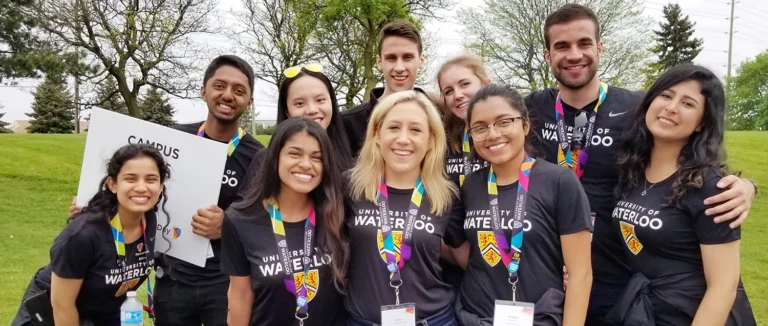How to Find Employer-Sponsored Work in Australia
Looking to move to Australia and need an employer to sponsor your visa? Finding an employer-sponsored job can seem like a daunting task, but with the right strategy and persistence, it’s definitely achievable. In this guide, we’ll walk you through the steps to finding a sponsor for your Australian work visa.
1. Understand Your Visa Options
Before you dive into your job search, it’s crucial to understand the different visa options available for employer sponsorship in Australia. Each visa type has its own requirements and processes:
- Temporary Skill Shortage Visa (Subclass 482): Allows you to work in Australia for up to four years if sponsored by an approved employer.
- Employer Nomination Scheme (Subclass 186): A permanent visa for skilled workers nominated by an Australian employer.
- Skilled Employer Regional (Provisional) Visa (Subclass 494): For skilled workers nominated by an employer in regional Australia, offering a pathway to permanent residency.
- Labour Agreements: These are customized agreements between employers and the Australian government, often used for specific industry needs.
Understanding these options will help you target the right employers and roles. It’s important to remember that you cannot pay an employer to sponsor you, and employers cannot legally ask for payment for sponsorship.
2. Prepare Your Profile for Success
Your job application needs to stand out, so make sure your profile is top-notch:
- Tailor Your CV and Cover Letter: Align your CV and cover letter with Australian standards and highlight skills relevant to your desired job. For example, if you’re applying for a chef position, showcase your culinary skills, experience, and training.
- Update Your LinkedIn Profile: Ensure your LinkedIn profile reflects your qualifications and experiences relevant to the Australian job market.
- English Language Testing: Many work visas require proof of English language proficiency, so make sure you’ve completed any required tests.
- Professional Registration: Some occupations, especially in healthcare, require registration. Make sure you meet these requirements if applicable.
3. Search for Jobs on Key Online Platforms
Finding the right job requires knowing where to look:
- Seek: One of Australia’s most popular job websites. Use keywords like “482 visa” or “sponsorship” to narrow your search to employer-sponsored roles.
- LinkedIn: Useful for upper-level professions and networking with industry professionals.
- Indeed Australia: Check this site for various job listings, including those offering sponsorship.
These platforms can help you find job openings that match your skills and visa needs.
4. Research and Contact Approved Sponsors
Some employers are approved sponsors and have a proven track record of successfully sponsoring international workers. To find these employers:
- Approved Sponsors List: Check the Department of Home Affairs website for a list of accredited sponsors who have a strong track record and faster processing times.
- Labour Agreements: Explore labor agreements on the same website to find employers who have special arrangements with the government.
Researching these lists will give you a solid starting point for finding potential employers in your field.
5. Build Your Personal and Professional Network
Networking can play a significant role in finding job opportunities:
- Spread the Word: Let your network know you’re looking for sponsorship. Many job opportunities come through word-of-mouth referrals.
- Attend Industry Conferences: Engage with industry professionals and potential employers at relevant conferences and events.
- Join Professional Associations: Becoming a member of industry associations can increase your visibility and connect you with potential sponsors.
Building a strong network can enhance your chances of finding a sponsor.
6. Consider Smaller Regional Areas
Exploring job opportunities in regional areas can be beneficial:
- Regional Shortages: Many regional areas in Australia experience skill shortages and may offer more opportunities for sponsorship.
- Diverse Opportunities: Regional areas need workers in various sectors, including health, education, and trades.
Applying to positions in these areas could increase your chances of securing a sponsorship.
7. Engage with Potential Employers
Once you’ve identified potential employers, it’s time to make contact:
- For Current Visa Holders: If you’re already in Australia, consider securing a job and proving your capabilities before asking for sponsorship.
- For Offshore Applicants: You might need to discuss sponsorship early in the conversation and persuade the employer of its benefits.
Effective engagement with potential employers can help build relationships and increase your chances of receiving an offer.
8. Seek Professional Help
Navigating the visa process can be complex:
- Registered Migration Agents: Consider consulting with a registered migration agent or immigration lawyer. They can provide guidance on the visa application process and improve your chances of success.
- Legal Assistance: Experienced professionals can assist with various employer-sponsored visas, ensuring your application is well-prepared.
Professional help can streamline the process and offer valuable support.
Conclusion
Finding employer-sponsored work in Australia requires a blend of strategy, research, and persistence. By understanding visa options, preparing a standout profile, searching key job platforms, and networking effectively, you can increase your chances of securing a sponsorship.
Whether you’re targeting regional areas or seeking professional advice, each step brings you closer to achieving your goal of working and living in Australia.
With the right approach and a bit of perseverance, you’ll be well on your way to starting an exciting new chapter down under.





